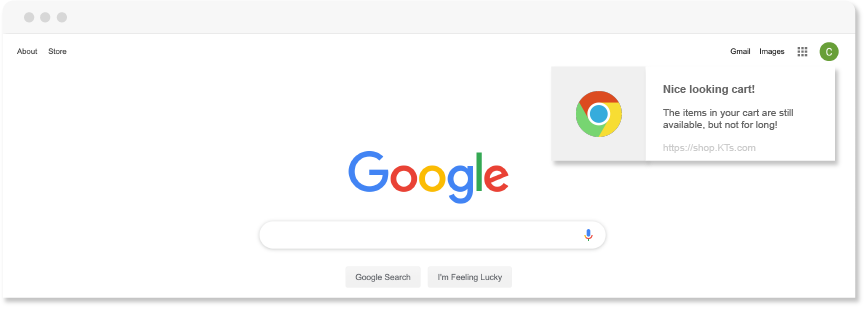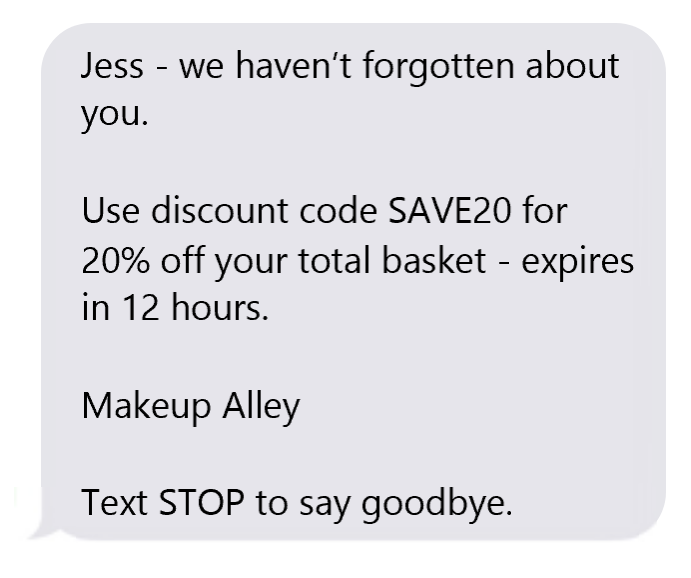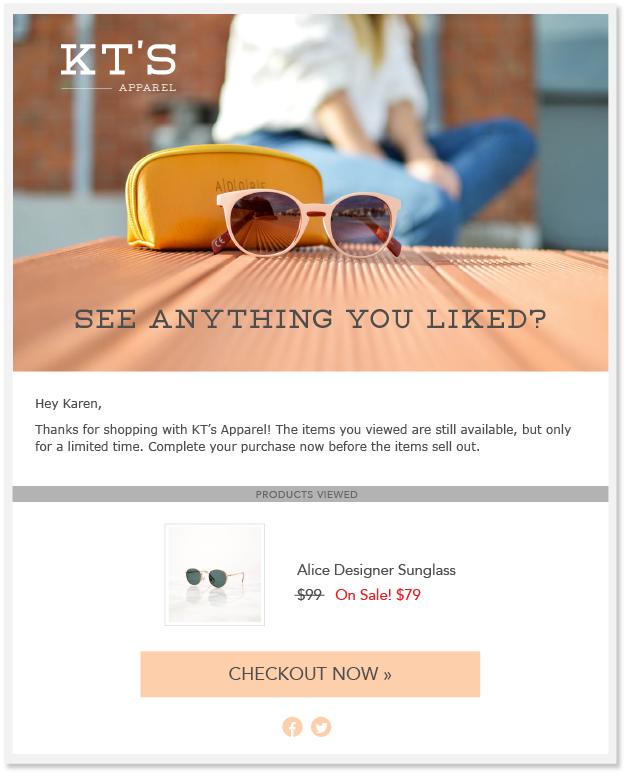T’is the Season to Remarket – Preparing Your Remarketing Campaign for the Holiday Boom
October 27, 2020
This holiday season will be record-breaking, with consumers pushing the boat out following a tough year. However, experts predict this Christmas shopping season to be unlike one ever before, with increased online spending, comparison shopping, and cart abandonment.
Yes, the Christmas shopper has emerged from a challenging year with a newfound confidence in buying online, using comparison sites, and bypassing marketplaces to buy direct. You have a unique opportunity to convert more customers than ever before, but with cart abandonment rates skyrocketing and seller competition increasing, now is the time to prepare your remarketing campaign for the festive season battle.
This guide brings together all of our visitor recovery tips and advice to explain how to use different remarketing campaigns for your different holiday shoppers.
New to eCommerce and remarketing? Take a read of our three-part introductory blog series on:
- #2 – Recovery Campaigns: How to Recapture Abandoned Sales
- #3 – Customer Recovery Tools & Tricks That Go Beyond Email
If you’re looking for an all-encompassing guide to increasing conversions this holiday season, you’re in the right place.
Why Remarketing is Crucial this Christmas
Remarketing is important throughout the year, but especially at Christmas time. During the festive season, you lose more customers to cart and browse abandonment than at any other time, for four main reasons:
- Gift planning
Holiday shoppers spend longer during the research phase of the purchasing journey, browsing for inspiration, and planning gifts. This naturally leads to high abandonment levels.
- Brand discovery
Shoppers discover new brands and stores during the holidays since they’re buying products they don’t usually purchase. This creates hesitancy that manifests itself in abandonment while shoppers look externally for reassurance or social proof.
- Finances
Christmas is expensive, and shoppers attempt to overcome this expense by conducting more price comparisons – abandoning websites in the process.
- Indecision
Buying for other people is hard. Many shoppers abandon purchases at the last-minute simply out of indecision – “will Uncle Bob like this?”
And these reasons will only intensify this Christmas because:
- Online shoppers are more confident in buying and comparing prices online, following lockdowns.
- Holiday shoppers want to give more meaningful presents after a trying year, leading to more research.
- Most people are working with reduced budgets due to lost jobs, business, and interest rates.
Your remarketing campaign is more crucial than ever.
Preparing Your Customer Remarketing Campaign for Christmas
Luckily, this year has also seen a sleigh-full of new cart abandonment tools that prevent abandonment from happening and increase customer recovery chances when it does.
To prepare your remarketing campaign for the holiday season, let’s break down the steps to take and the tools to help.
1. Prepare your website for an influx of customers (and abandonment)
More customers will land on your website this Christmas. Your goal is to gently guide them along the following stages of the customer journey, using as many touchpoints as possible to steer them to the checkout and away from abandonment.
Awareness
The awareness stage is the busiest stage of your customer funnel, full of everyone landing on your website. Use this as an opportunity to learn everything you can about your website visitors, while subtly pushing them to the next stage.
Tools to help:
- Real-time site-wide capture – record customer contact information as it’s typed onto your website to use in later remarketing campaigns.
- Delayed pop-ups – encourage customers to enter their contact information and progress to the next stage by offering discounts and buying guides sent straight to their inbox.
- New tab alerts – bring customers away from the brink of abandonment by alerting them when they open a new tab and changing the tab favicon and header to attract their attention back to your website.
Consideration
Most abandonment happens during the consideration phase, both before and after adding products to a cart. Therefore, use this stage to make it as easy and compelling as possible for customers to convert – whether this is their first or return visit.
Tools to help:
- Exit-intent pop-ups – alert customers who attempt to leave your website by presenting them with an exit-intent offer or information of interest to bring them back to the checkout flow.
- One-page checkout – make checking out quick and easy by adopting a one-page checkout.
- Form auto-complete – help customers returning to your store convert quickly by using cookies to auto-complete relevant information.
Bonus tip: Place the email address field at the beginning of the checkout form so you can capture this information before the most common point of abandonment.
Acquisition
If a customer makes it to the acquisition stage, good work! If they don’t, they’re now a hot lead for remarketing. These customers know about your website, they’ve demonstrated purchase intent, and all you need to do is a little more convincing.
Tools to help:
- Cart abandonment software – transfer their contact details into a remarketing campaign.
- Customer segmentation – capture the moment of abandonment to determine their engagement level and queue them in the appropriate campaign (browse or cart abandonment).
2. Segment your different types of Christmas shoppers
If you don’t already segment visitors after they’ve abandoned your website, take a quick read of this article on browse abandonment emails and why they’re essential.
In short: just because a customer leaves your website before adding products to their shopping cart doesn’t mean they aren’t ripe for remarketing. It just means you must adopt a different, slightly softer approach for recovering them.
It’s also useful to segment customers and tailor campaigns based on the different holiday shoppers at this time of year. For example – someone abandoning their Christmas shopping cart in October will respond to different messaging than someone abandoning on December 23rd.
You have four main types of holiday shoppers:
The early-bird
Early-bird shoppers start and complete their Christmas shopping early in the season – sometimes before it’s begun. These shoppers have time on their side, meaning that they’re in no rush to make a purchase, but nothing is stopping them. You want to support them on this journey by creating multiple touchpoints until they’re ready to buy.
Early-bird shoppers are active between September to October.
The planner
Planners spend most of the season researching their gift choices, allowing them to complete their Christmas shopping in good time. These shoppers have a low purchase intent when first visiting your website – they’re just browsing. This makes continued engagement throughout the product discovery phase important.
Planners are usually active between October to early December.
The bargain hunter
Bargain hunters like to wait a little longer to start Christmas shopping, hoping to catch some deals over the cyber weekend and during any early sales. These shoppers have a high purchase intent but high basket totals and shipping fees will scare them into abandoning.
Bargain hunters are common between Thanksgiving and mid-December.
The last-minute shopper
Last-minute shoppers leave researching and planning to the last possible opportunity – sometimes, post-Christmas. Last-minute shoppers have the highest levels of purchase intent and respond well to scarcity and loss aversion tactics but don’t waste much time in their inbox.
Last-minute shoppers typically start shopping towards the end of December.
Use these shopper personas to personalize your remarketing messaging throughout the season.
3. Decide which visitor recovery tools to use
In the past, you have likely used cart abandonment emails to recover lost customers during the holidays. However, we all know that the email inbox is incredibly busy at this time of year, making it difficult to be seen.
A multi-channel customer recovery strategy uses one or more of the following tools to maximize your chances of reaching lost customers and recovering them back to your website.
Browser push notifications
What they are: Abandoned cart push notifications are timed, clickable messages delivered directly to a shopper’s web browser. After a visitor abandons your website, the notifications flash up in the corner of their screen, delivering a short message and an easy way back to their cart.

What they’re good at: Browser push notifications bypass the email inbox to appear directly on a shopper’s computer screen – capturing attention and creating a sense of urgency. At the same time, your potential customer is sitting at their computer, ready to continue their journey.
Who they work best for: Abandonment push notifications are effective when sending time-limited discount offers to bargain hunters, and scarcity notifications to last-minute shoppers.
SMS messages
What they are: Abandonment SMS messages are text messages sent to the mobile phone of shoppers who left their purchase.
What they’re good at: SMS remarketing messages are perfect for reengaging shoppers away from the inbox to create a more personal relationship. They also utilize the power of m-commerce, allowing shoppers to continue their journey on your mobile website or app.

Who they work best for: Mobile phones are commonly used for product research, making SMS messages ideal for capturing early-bird shoppers’ and planners’ attention. The immediacy of text messages also makes them great for sending deals and discounts to bargain hunters.
Browse abandonment emails
What they are: Browse abandonment emails are recovery emails sent to customers who abandoned your website before adding anything to their shopping cart.
What they’re good at: When combined with the right tactics and messaging, browse abandonment emails are great for establishing a relationship with new visitors to build trust and support them through their purchase.
Who they work best for: Because of their timing, browse abandonment emails are useful for providing early bird shoppers with buying guides, and assisting planners with personalized product recommendations based on their browsing history.

Cart abandonment emails
What they are: Cart abandonment emails are your standard emails sent to customers who added products to their carts but failed to make it through the checkout. However, by following the right tips, cart abandonment emails can gain more than just standard results.
What they’re good at: Cart abandonment emails work well at reminding shoppers about their cart, reengaging their interest, and encouraging them back to complete their purchase.
Who they work best for: Since cart abandonment emails use more direct tactics, they are often used to send deals and discounts to bargain hunters, and provide information on fast shipping and depleting stock levels to last-minute shoppers.
4. Decide which tactics to use when
The tactics to use in your on-site and customer recovery campaigns depend on your customer personas and visitor recovery tools.
However, certain tactics also lend themselves to specific points during the holiday season:
September to October
The start of the holiday season is full of early birds and planners. Use this time to:
- Introduce yourself and develop brand engagement by sharing your story.
- Keep customers engaged by reminding them about their visit.
- Help with product discovery by sharing buying guides or offering personal one-to-one assistance.
- Establish trust by detailing your returns policy or money-back guarantee.
November
Gift buying ramps up in November, allowing you to adopt slightly more persuasive ecommerce tactics to retain and re-engage website visitors. Use November to:
- Assist shoppers by sending personalized product recommendations or more detailed information on the products they viewed.
- Generate a herd mentality by sharing social proof using reviews and ratings.
- Begin building a sense of urgency by reminding customers how long they have left to order before Christmas.
Cyber weekend
Cyber weekend is all about grabbing a bargain. Use this weekend to entice customers with:
- Exclusive deals and discounts.
- Product scarcity and countdown offers.
- Help during a stressful weekend.
December
Christmas is nigh, so you can really pump up the persuasion in December, using:
- Remaining stock levels and customer purchase activity to create urgency.
- Product recommendations to engage attention and increase basket sizes.
- Limited window deals to incite loss aversion and encourage action.
- Information on your fast shipping speeds to create reassurance.
5. Build your campaigns
Finally, it’s never too early to build and design your campaigns – especially in the lull before the mayhem.
Use whatever time you have to work on your campaigns and put the above tools and tips into practice now. Even better, sign up for a free 14-day CartStack trial to experiment with a full suite of customer recovery tools and perfect your campaigns in time for the big man in red.
Happy holidays!





